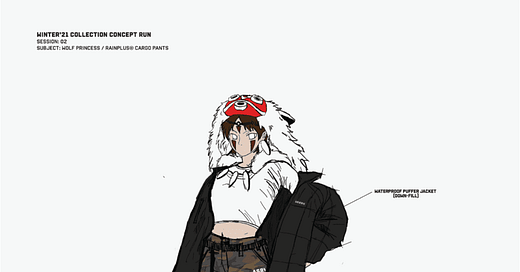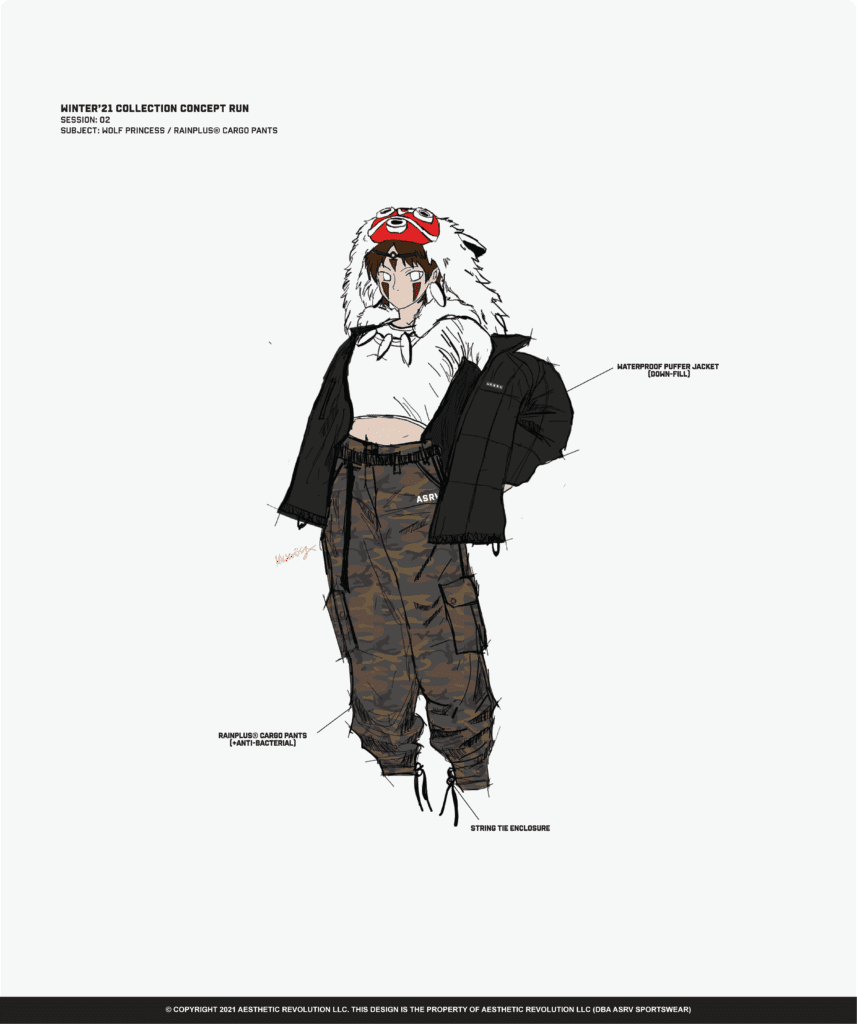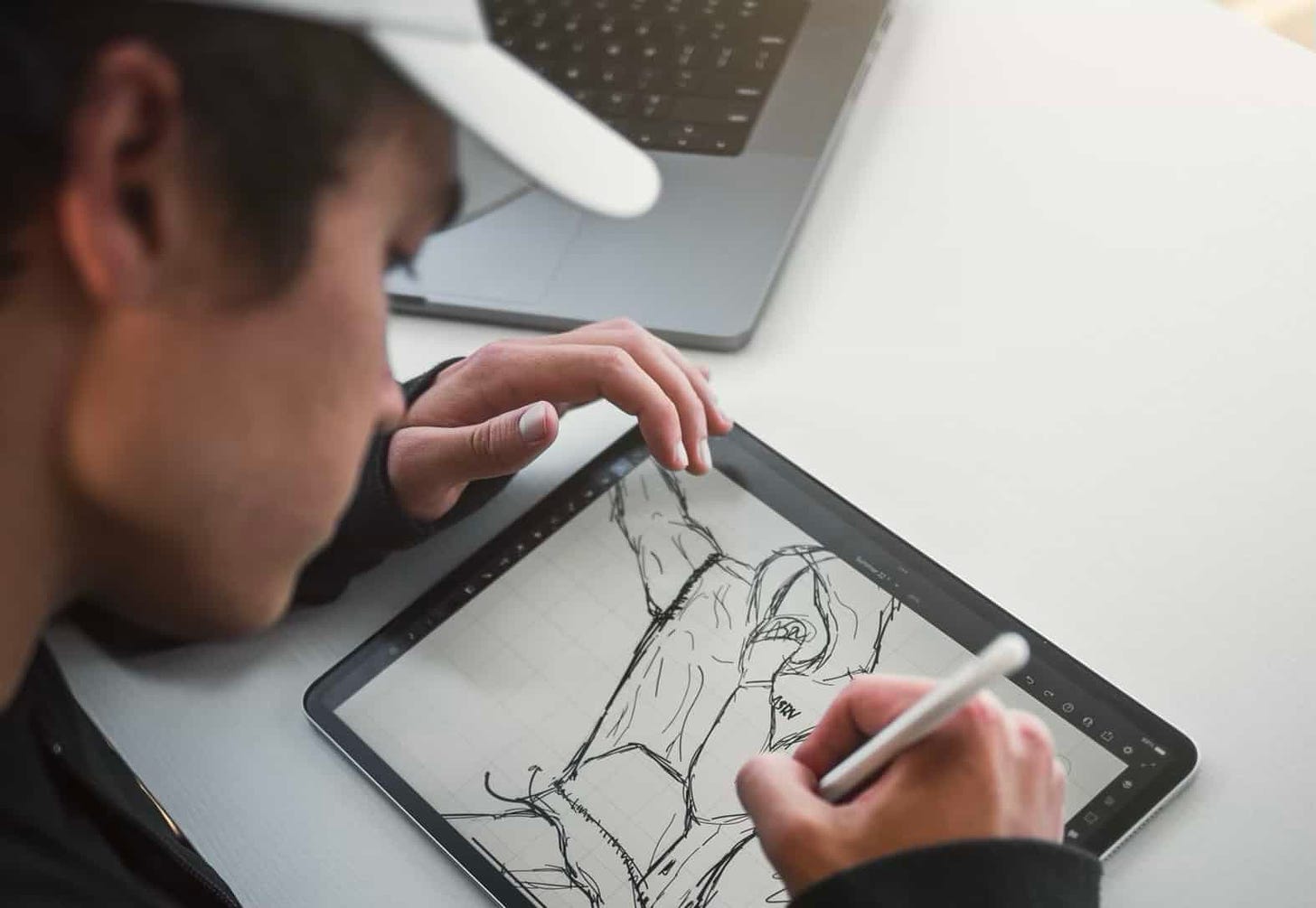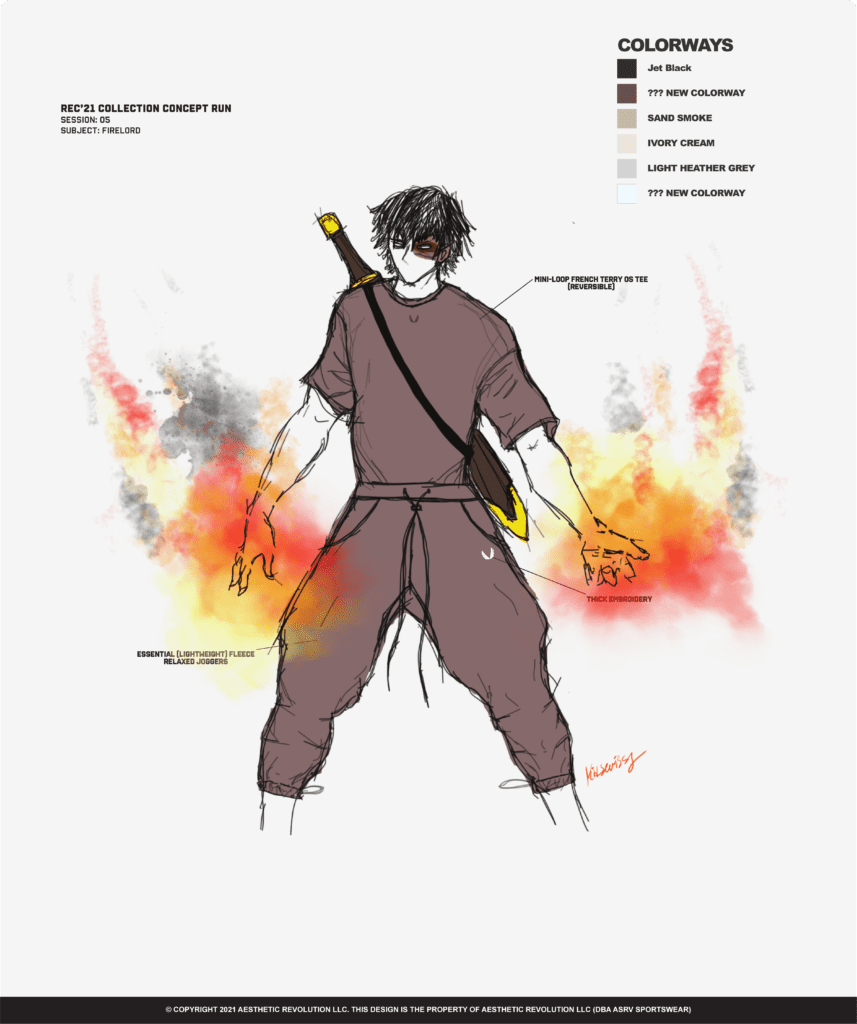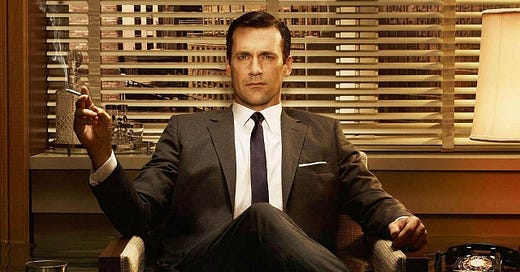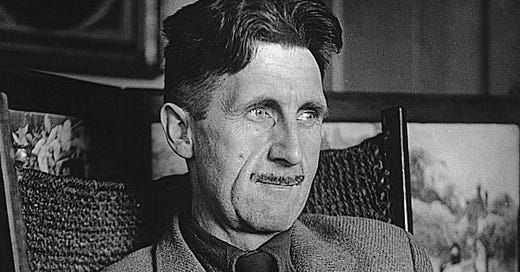
The lead designer at sportswear brand ASRV breaks down his creative process and how to bring art to life
An interview with ASRV’s Casey Sheehan on creativity, art, and finding purpose as a designer.
The models in sportswear company ASRV’s Instagram ads look chic, yet they still appear dressed for combat. The lean, agile bodies are peppered with tattoos and wear fitted outfits that seem to invite challenge. Between producing made-for-Hollywood trailers and designing clothing that evolves every season, a great deal of thought goes into each collection, the brand’s lead designer Casey Sheehan told me.
Twenty-six-year-old Sheehan — athletic and tattooed like actors from the brand’s marketing campaigns — draws inspiration from the creative minds behind Japanese animation group Studio Ghibli, science-fiction epics like Lord of the Rings and Dune, and fashion icons like Errolson Hugh and Samuel Ross. Sheehan's cultural touchstones not only influence how he designs clothing, but act to inform his entire creative process.
“Everybody has a unique perspective that can be told through art,” the San Diego-based designer said. Specifically, he's fascinated by stories told through a paracosm — a highly detailed imaginary world — as it lets a creator push the limits of what’s possible. His drawings seem to elevate off the page because of the lively, moving characters he sketches wearing the ASRV threads.
“I love staying in that headspace,” Sheehan said of world building that involves conjuring complex characters and fashion. “It makes me feel alive.”
In the clothing he's designed — basics like shirts and shorts, and then more intricate designs such as technical cargo pants, vests, and winter coats — there's an interplay of futuristic, cutting-edge technology with a nod toward pragmatism. Most have a water-proof component, or extreme stretchiness, and are built with details like hidden zipper pockets and reflective panels.
It's all packaged as attire you can wear in any terrain or season, be it the gym floor or during a casual outing. ASRV’s clothing took off alongside the broader, burgeoning “athleisure” craze that has become a mainstay of young professionals’ wardrobes since the onset of the pandemic.
Indeed, the company saw its sales spike last year as young professionals prioritized comfort with style in their sartorial choices.
At ASRV, designers collaborate with the business teams at the start of every new apparel line. It’s a multidisciplinary process that helps cement the unique “ethos” of each product release, Sheehan explained.
“The campaign message, the marketing material, the campaign’s locations and color tones — these all help set the direction of the garments that need to be designed,” he said. High-profile figures like actor Chris Hemsworth, singer Alicia Keys, and NBA player Lonzo Ball have all been photographed donning ASRV.
Developing patience from the process
Over several months, Sheehan sketches out his designs in paper notebooks as well as on his iPad. Flat drawings of clothing evolve into anime-style illustrations in realistic, battle-ready poses that look like they belong on a Pixar screen or streaming platform.
“It’s all very satisfying to see a final collection come together as a whole once it’s ready for release,” he said. “All the hours of behind-the-scenes work goes unnoticed, but to us, that’s the most fulfilling part.”
The company brought Sheehan on in 2019, and he dropped out of graduate school to join the team. He saw his job as a limitless playground for new ideas and designs. Over time, however, he said his creative process has become much more streamlined and practical.
“The patience I’ve learned in this space is very valuable to me,” he said, adding that narrowing his focus has yielded a higher-quality output. Ideas for new clothing designs come often, he explained, but that doesn’t mean it’s always best to bring them to market immediately.
“We have forever to release any kind of product we want to create, it just has to come at the right time.”
Beyond his sketchbooks, Sheehan said his days involve meetings with suppliers and factories, researching fabric, and building out other apparel concepts ranging from streetwear to more technical athletic gear.
Being addicted to your craft
Success for creatives is usually elusive, which often makes people hesitant to recommend creative pursuits even if they've had favorable results themselves. For fashion in particular, the stakes can be even higher because the art must have consumer appeal.
For an artist, the most obvious gauge of success is whether the products sell well, Sheehan told me. On a practical level, he’s learned to prioritize making an extremely good first-round sample, as it conveys professionalism and foreshadows retail success.
But Sheehan thinks less weight should be given to day-to-day tasks compared to the broader picture.
“[It’s about] loving what you do everyday, going to bed and waking up excited,” he said. “Being absolutely addicted to your craft — that’s the real internal success that every artist or designer should strive for, regardless of outcome.”
Success as a creative can be defined as the feeling you get when you can’t see yourself doing any other type of work because you are so in love with it, Sheehan maintained. Poet and novelist Alice Walker echoed a similar sentiment: “When you are creating beauty around you, you are restoring your own soul." (Sheehan referenced the quote in conversation.)
Get better every single day
When asked about his creative process, Sheehan turned to the habits that underpin his craft.
“Whatever it is — drawing, designing, making music, creating art — do it once a day and watch how the world transforms around you,” he said. Even better, he added, is to put that work on display like in a public portfolio or website, or through starting your own brand or online shop.
“Just go for it,” he said. “Really showcase who you are as an artist and what kind of value you could provide…it’ll change who you are. It’s almost like a self-accountability act — once you share it with the world, it becomes you.”
Sheehan sketches everyday, and is constantly studying emerging fashion and design trends. He breaks his days up using the Pomodoro technique, a time-management system that involves working in 25-minute blocks separated by five-minute breaks.
His nighttime routine, too, is bent toward creativity.
“I wind my days down by drawing, reading, and journaling,” Sheehan said. “Anything that fuels my creativity in those late hours. I always keep tabs on what works and try to replicate those moments as often as I can.”
Edited by Aaron Weinman
Complement this interview with the ultimate guide to focus for creatives, and articles on turning your passion into a career, positioning yourself to do work you actually care about, and how to master skills that make you invaluable in the job market.

